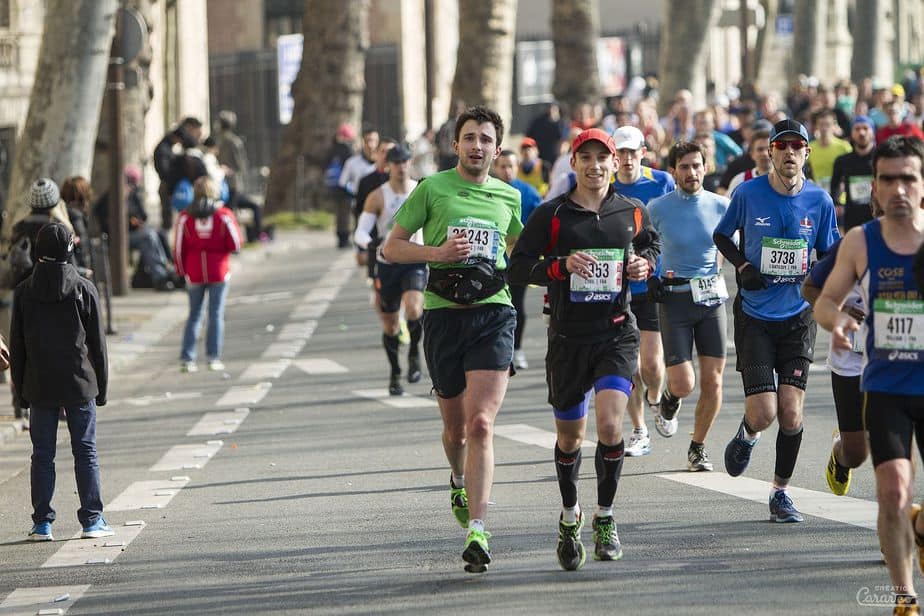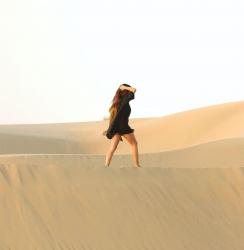Top 10 Facts About the Paris Marathon
Once a year, runners from around the world flock to Paris for a prestigious athletic event that ranks high in popularity within the global running community. The Paris Marathon is an event of incredible proportions, albeit not the biggest one in Europe by any stretch.
Here are some fun facts about the day, and what you can expect if you’re considering being part of this race.

By Miguel A. Amutio – Unsplash
1. The Paris Marathon Attracts 57,000 Runners
These athletes come from far and wide, and range over 145 different nationalities. Because this is nowhere near the largest marathon in this part of the world, the event’s registration capacity sells out pretty quickly, and they do cap attendance at 57,000.
2. Of these 57,000…
… 35% come from French territory outside of Paris, and 40% come from international locations. This means that roughly 25% of the event’s capacity is run by local Parisians, which is a great turn out for any home-based event.

Paris Marathon – by Valentin. – Wikimedia Commons
3. It Takes Place on the Second Sunday in April
Which happens to be one of the best times to be in the city of love. Spring in Paris is a wonder to behold, and you can enjoy the perks of running in temperatures that carry you through a marathon structure.
This is one of the most well-organized running events in the world.
4. Runners Are Encouraged to Take Jet Lag into Account
A lot of newbies to international races come to Paris for the marathon, and for many this is their first international running event. A rookie error is often that runners forget the impact that jet lag can have on the body, even if the distance traveled wasn’t all that long.

Paris Marathon – by Guilhem Vellut – Wikimedia Commons
How to Train for the Paris Marathon
5. The Route is Known for its Quirks
While the course is mostly flat, there are a number of quirks en route that can throw unsuspecting runners off their game.
Parisians love setting up fruit stalls along the route to pass to the runners as they make their way through the city. Runners obviously don’t have time to find a trash can every time they enjoy an orange slice or banana, so there are usually tons of peels on the streets that can get underfoot.
6. Cobblestones Also Cause Some Surprise
Again, this mostly flat route isn’t free from its “uphills”. Paris is full of cobblestoned streets that are generally unfamiliar territory for roadrunners.
Runners who have experience with trail running tend to fend better on the cobblestones than those without. But in general runners are encouraged to slow their pace in these parts due to the risk they pose on the ankles.

Paris Marathon – by Marc CARAVEO – Wikimedia Commons
7. There’s Usually a Ton of Mud at the Paris Marathon
Ever-rainy Paris doesn’t cease on account of the event. The Paris Marathon route will eventually take runners through both the Bois de Vincennes and Bois dd Boulogne; the two biggest public parks in the city.
The mud gets dense, especially if you’re toward the back of the pack. Try and opt for grass-routes where possible, though these quickly turn to mud too since everyone has the same idea.
The Parks of Boulogne and Vincennes: Which to Visit
8. The Marathon Starts at the Champs-Élysées
From there, runners will head downhill to circle round the Place de la Concorde before turning right onto Rue de Rivoli. The route then passes the iconic Louvre Musuem, before venturing around the Place de la Bastille, and down Boulevard Soult to the Bois de Vincennes. Rue de Charenton marks the official halfway point for the marathon.
The route then follows the course of the Seine, passing Île de la Cité where the Notre Dame can be spotted, and going under the Pont Neuf, then a series of tunnels. Come the Trocadéro, runners are able to hydrate at the massive drinks station opposite the Eiffel Tower. Runners then continue alongside the Seine, before branching off east to eventually pass through Bois de Boulogne, emerging for the final 200 meters before approaching the finish line on the Avenue Foch.

Paris Marathon – by Marc CARAVEO – Wikimedia Commons
9. The First Paris Marathon Was in 1976
And it was won by a local French athlete named Jean-Pierre Eudier. His time was 2 hours and 20 minutes. The winner of 2021’s race was Elisha Rotich, with a time of 2 hours and 4 minutes.
10. Woman Were Not Permitted to Run the Paris Marathon until 1978
The first 2 years of the event were men only, and then in 1978 women were invited to participate for the first time. The first female winner was someone named “Lawrence” who completed the course in 3 hours and 26 minutes.
The women’s winner for 2021 was Tigist Memuye with a time of 2 hours and 26 minutes.

Paris Marathon – by Guilhem Vellut – Wikimedia Commons
Planning a trip to Paris ? Get ready !
These are Amazon’s best-selling travel products that you may need for coming to Paris.
Bookstore
- The best travel book : Rick Steves – Paris 2023 – Learn more here
- Fodor’s Paris 2024 – Learn more here
Travel Gear
- Venture Pal Lightweight Backpack – Learn more here
- Samsonite Winfield 2 28″ Luggage – Learn more here
- Swig Savvy’s Stainless Steel Insulated Water Bottle – Learn more here
Check Amazon’s best-seller list for the most popular travel accessories. We sometimes read this list just to find out what new travel products people are buying.










